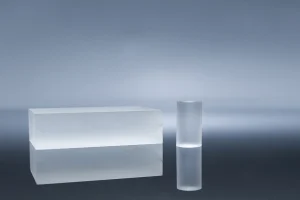Introduction
In the world of nonlinear optics, barium borate crystals, popularly known as BBO crystals, have carved out a significant niche due to their unique characteristics and wide-ranging applications. This fascinating family of crystals consists primarily of two members: Alpha-Barium Borate (α-BBO) and Beta-Barium Borate (β-BBO). Today, we take an in-depth look into their distinctive structures, properties, and applications that set them apart.
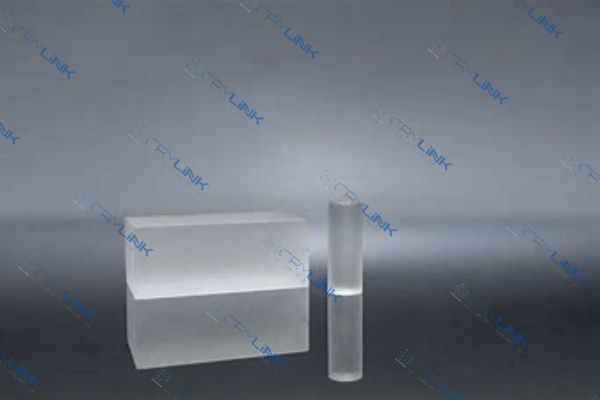
Analyzing Crystal Structure and Properties: α-BBO vs β-BBO
Crystal structures are a foundational aspect of the world of optics and photonics, influencing the properties and, in turn, the functions of different crystals. Two prime examples of this are Alpha-Barium Borate (α-BBO) and Beta-Barium Borate (β-BBO) crystals. Let’s delve into their individual crystal structures and the distinct properties they bring about.
α-BBO crystal structure conforms to the orthorhombic system, characterized by three axes of unequal length intersecting at right angles. This orthogonal arrangement imparts unique optical properties to α-BBO crystals.
On the other hand, β-BBO subscribes to the trigonal system. Its structure features a three-fold rotational symmetry axis and three axes of equal length lying in a plane, forming an equilateral triangle.
The crystal structures of α-BBO and β-BBO give rise to distinctive properties that define their performance in various applications.
In the intricate universe of optical crystals, α-BBO crystals stand tall with their remarkable temperature stability and wide transparency range. These attributes, stemming from their unique orthorhombic crystal structure, are pivotal in defining their roles in various applications across the optics and photonics spectrum.
Temperature stability is a sought-after trait in optical crystals, particularly in applications where environmental temperature cannot be controlled or predicted. This is where α-BBO crystals shine.
The orthorhombic structure of α-BBO crystals confers them with outstanding temperature stability. It implies that the refractive index of α-BBO a critical factor determining the behavior of light passing through it exhibits minimal variations even when exposed to a wide range of temperatures.
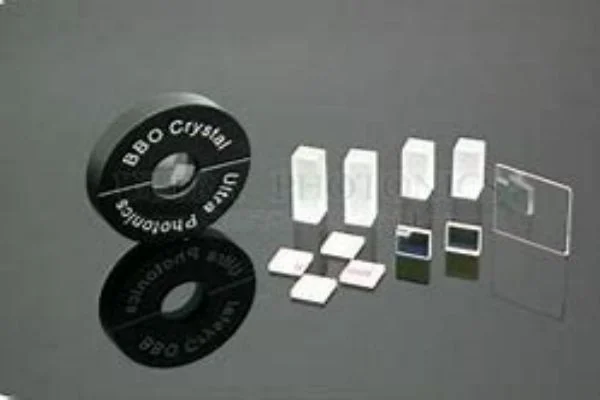
This remarkable thermal consistency ensures α-BBO crystals maintain their optical performance over a broad temperature spectrum. This not only amplifies the reliability of devices incorporating α-BBO crystals, but also extends their applicability to environments with extreme or fluctuating temperatures. From scientific research in temperature-variable labs to space applications with diverse thermal conditions, the temperature stability of α-BBO crystals significantly broadens their usability.
The transparency range of a crystal refers to the wavelength range in which the crystal remains transparent, allowing light to pass through without significant absorption. The broader the transparency range, the more versatile the crystal.
The transparency range of α-BBO crystals is impressively wide, spanning from the deep ultraviolet (about 189 nm) to the far-infrared (up to 3500 nm). This broad operational spectrum makes α-BBO crystals adaptable to a variety of optical applications.
For instance, in the realm of frequency conversion, where input light is converted to a desired output frequency, the wide transparency range of α-BBO crystals ensures they can effectively process a multitude of input light frequencies. This, combined with their temperature stability, makes α-BBO crystals a preferred choice for a host of applications, from harmonic generation to electro-optic modulation.
In essence, the superior temperature stability and extensive transparency range of α-BBO crystals underline their importance in the field of optics. These properties not only enhance the performance and versatility of α-BBO crystals, but also open up new possibilities for advancements in optical technology. Understanding and leveraging these properties can pave the way for cutting-edge breakthroughs in areas ranging from scientific research to high-tech industries.
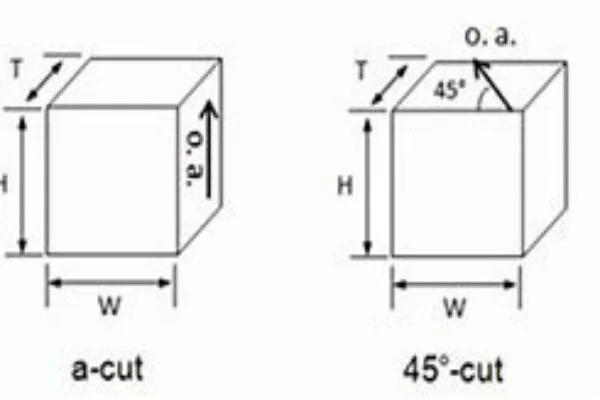
As we delve into the details of β-BBO crystals, two of its distinct properties take center stage: its exceptional phase-matching capabilities and high damage threshold. Both these attributes stem from its unique trigonal crystal structure and significantly impact its wide-ranging applications in nonlinear optics and laser technology.
Phase-matching, the process where the phase velocities of interacting light waves within a crystal are synchronized, is an essential aspect of nonlinear optical processes. This is primarily because efficient energy transfer between the waves, which is crucial in processes like second harmonic generation or optical parametric amplification, hinges on this synchronization.
β-BBO crystals excel in phase-matching due to their trigonal crystal structure. This feature allows a high degree of freedom in aligning the phase velocities of the light waves, resulting in more efficient energy transfer and, thus, higher output power. The ability to achieve wide angular bandwidth phase-matching in β-BBO crystals, in particular, lends them an edge in a variety of optical applications, from frequency conversion to parametric amplification.
The laser damage threshold is a measure of the maximum power a material can endure without sustaining structural or functional damage. A high laser damage threshold is a prized property in the world of lasers and nonlinear optics, where intense light beams are commonplace.
The inherent structure of β-BBO crystals imparts a remarkably high laser damage threshold, surpassing many other common nonlinear optical materials. This characteristic makes them an excellent choice for high-power laser applications where the crystal must withstand intense laser beams without suffering damage.
Furthermore, the high damage threshold of β-BBO crystals also contributes to their longevity and durability. It ensures that these crystals can perform reliably over long periods, even in high-stress environments, thereby delivering superior value for money in the long run.
To sum it up, the exceptional phase-matching capabilities and high damage threshold of β-BBO crystals underscore their significance in the field of nonlinear optics. These properties not only enhance the performance of β-BBO crystals in a variety of applications, but also open up new avenues for technological advancements in laser technology. The understanding and exploitation of these properties could revolutionize many facets of modern optics and photonics, from laser technology to optical communication.
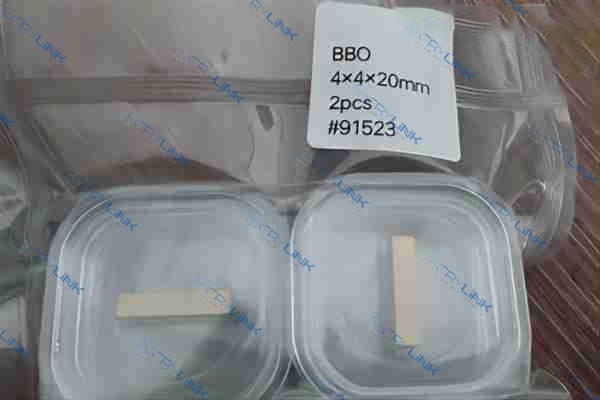
Discussing Unique Characteristics: Phase-Matching, Temperature Stability, and Transparency Range in α-BBO and β-BBO Crystals
Each type of optical crystal brings a unique set of characteristics to the table, guided by their inherent crystal structure. Two such examples, α-BBO and β-BBO crystals, exemplify the diverse capabilities and applications of nonlinear optical crystals. Let’s dissect their distinct characteristics, focusing on phase-matching capabilities, temperature stability, and transparency range.
α-BBO Crystals: The Champions of Temperature Stability and Transparency Range
Known for their robust temperature stability, α-BBO crystals have the exceptional capability to maintain a consistent refractive index across a wide temperature spectrum. This is primarily due to their orthorhombic crystal structure, which minimizes changes in the refractive index in response to temperature variations.
This thermal stability ensures reliable performance of α-BBO crystals in a multitude of applications, including those operating in harsh or unpredictable thermal environments. From research labs where temperature control can be challenging to field applications with widely fluctuating thermal conditions, α-BBO crystals consistently deliver optimal performance.
The second noteworthy characteristic of α-BBO crystals is their extensive transparency range. They showcase remarkable transparency across a broad spectrum extending from the deep ultraviolet (around 189 nm) to the far-infrared (3500 nm). This wide operational range opens up diverse application possibilities, making α-BBO crystals versatile players in the world of nonlinear optics.
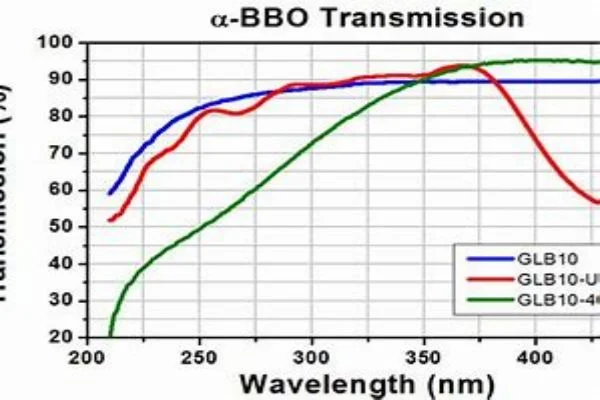
β-BBO Crystals: Masters of Phase-Matching and High Damage Threshold
On the other hand, β-BBO crystals shine in their phase-matching capabilities and high damage threshold, primarily due to their unique trigonal crystal structure.
Phase-matching, which involves aligning the phase velocities of interacting light waves within the crystal, is fundamental to efficient energy conversion in nonlinear optical processes. β-BBO crystals, with their trigonal structure, provide high freedom in achieving phase-matching, resulting in greater conversion efficiency and higher output power. This makes them ideal for a wide range of applications, from frequency conversion to parametric amplification.
Moreover, β-BBO crystals boast a high laser damage threshold, i.e., they can endure high-intensity laser beams without incurring damage. This quality makes them an excellent choice for high-power laser applications and ensures their longevity and reliability, even in high-stress environments.
In conclusion, both α-BBO and β-BBO crystals exhibit unique characteristics that make them indispensable in their respective domains. While α-BBO crystals excel in temperature stability and a broad transparency range, β-BBO crystals impress with their superior phase-matching capabilities and high damage threshold. Understanding these distinctive attributes is vital for exploiting these crystals’ full potential and advancing optical technologies.
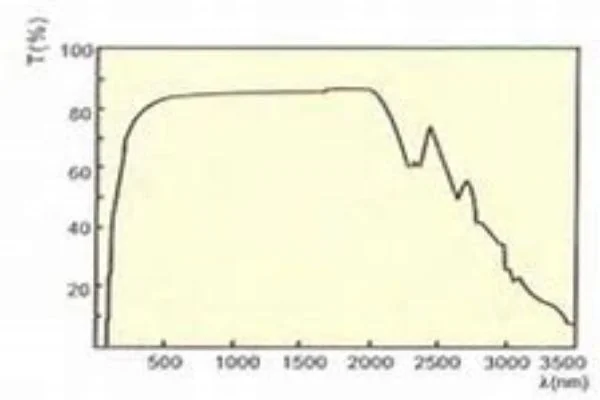
Specialized Applications of α-BBO and β-BBO Crystals: Frequency Conversion, Parametric Amplification, and Electro-Optic Modulation
The diverse properties of α-BBO and β-BBO crystals make them valuable players in numerous optical applications. Let’s shed light on specific applications where these crystals truly excel: frequency conversion, parametric amplification, and electro-optic modulation.
Frequency Conversion: A Showcase of β-BBO’s Phase-Matching Prowess
Frequency conversion processes, such as harmonic generation or sum/difference frequency generation, require exceptional phase-matching capabilities. Here, β-BBO crystals excel due to their unique trigonal crystal structure that facilitates a high degree of freedom in phase-matching. This leads to efficient energy transfer and higher output power, thus improving the overall efficiency of the frequency conversion process.
Parametric Amplification: The Arena for β-BBO’s Superior Phase-Matching
Optical parametric amplification, a process where a signal beam is amplified using a pump beam, hinges on phase-matching for optimal efficiency. β-BBO crystals, with their excellent phase-matching capabilities, serve as efficient materials for optical parametric amplifiers. The high output power resulting from superior phase-matching ensures amplified signal beams of high intensity, making β-BBO crystals an integral part of high-performance optical parametric amplifiers.
Electro-Optic Modulation: Capitalizing on α-BBO’s Broad Transparency Range and Temperature Stability
Electro-optic modulation, a process of altering the phase, polarization, or amplitude of light using an electric field, requires crystals with a wide transparency range and good temperature stability. α-BBO crystals, with their extensive transparency range, accommodate a broad spectrum of light frequencies, making them suitable for diverse electro-optic modulation applications.
Moreover, their superior temperature stability ensures reliable performance across a wide temperature range. This makes α-BBO crystals an excellent choice for electro-optic modulators in applications that involve harsh or fluctuating temperature conditions.
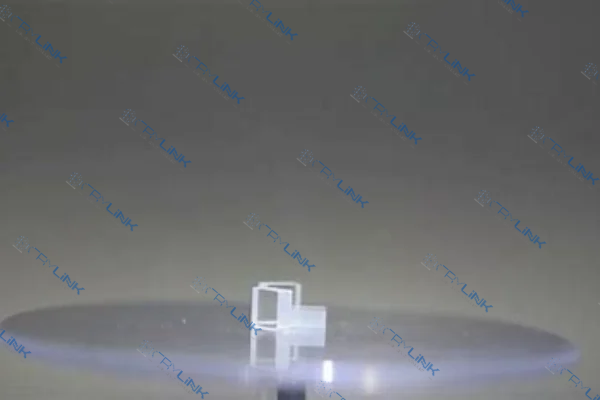
Conclusion: α-BBO and B-BBO Crystals – Distinct Yet Vital
Both α-BBO and β-BBO Crystals have their unique structures, characteristics, and applications. Whether it’s α-BBO’s remarkable temperature stability and broad transparency range, or β-BBO’s high damage threshold and phase-matching capabilities, both have made significant contributions in advancing the field of photonics and optics. It’s the understanding of their differences that helps scientists and engineers choose the right crystal for their specific application.
Frequently Asked Questions
- 1. What is the key difference between α-BBO and β-BBO crystals?
The key difference between α-BBO and β-BBO lies in their crystal structures. α-BBO has an orthorhombic structure while β-BBO has a trigonal structure. These structures give them unique properties. - 2. Why is temperature stability important in α-BBO crystals?
Temperature stability ensures that α-BBO crystals maintain a consistent refractive index even under varying temperature conditions. This property is crucial in applications where temperature changes cannot be controlled or avoided. - 3. What makes β-BBO crystals suitable for high-power laser applications?
β-BBO crystals have a high laser damage threshold, meaning they can tolerate high levels of laser power without experiencing any structural or functional damage. This property makes them suitable for high-power laser applications. - 4. What is phase-matching, and why is it important in β-BBO crystals?
Phase-matching is a process where the phase velocities of interacting light waves within the crystal are aligned for optimal efficiency. β-BBO crystals, with their trigonal structure, have excellent phase-matching capabilities, making them ideal for applications requiring high conversion efficiency. - 5. What are the common applications of α-BBO and β-BBO crystals?
α-BBO crystals are commonly used in frequency conversion and electro-optic modulation due to their broad transparency range and temperature stability. On the other hand, β-BBO crystals excel in optical parametric amplification, thanks to their excellent phase-matching capabilities and high damage threshold.


